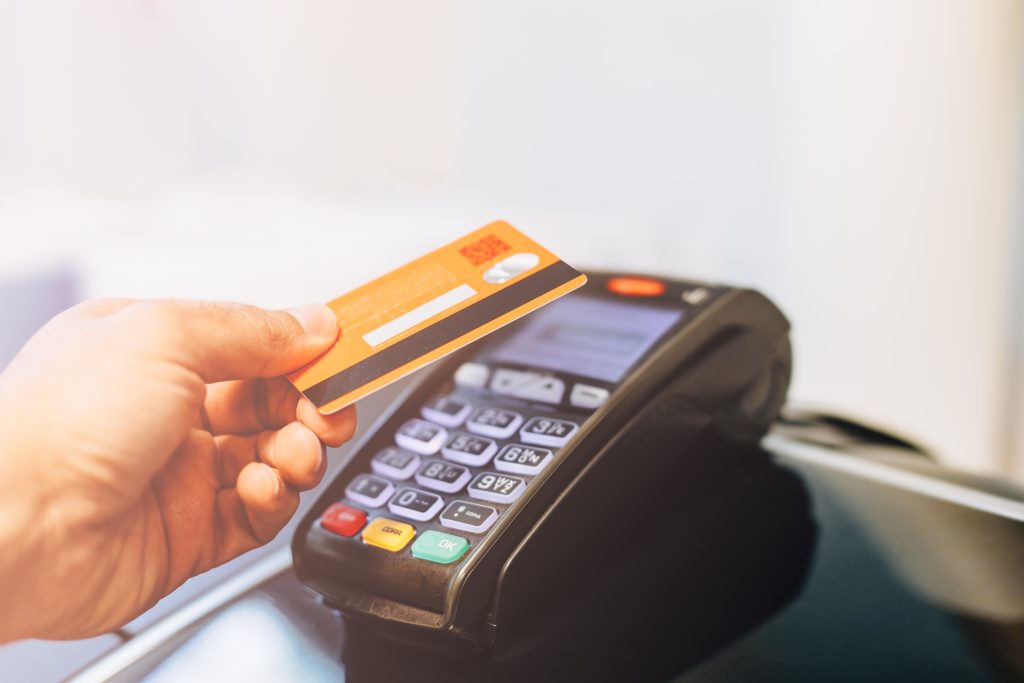Contactless technology has been a popular term after the COVID-19 outbreak exposed us to increased contamination risks. To adapt to new realities, the travel and tourism industry had to embrace contactless payments as a way of aiding social distancing.
This has hastened the adoption of next-generation technology, and contactless payments in travel and hospitality are now the norm. Each customer-to-merchant interaction may be done digitally, giving customers a secure, worry-free, and seamless experience.
According to Identiv, the global contactless payments market will rise to $18 billion over the next five years, representing an 11.7% compound annual growth rate (CAGR). As a result, 27% of small businesses have noticed an increase in consumers’ contactless spending habits, and alternative payment technologies such as BNPL services are now included in Apple’s iOS 16 release as part of Apple Pay.
Contactless payments in touristic services
Customer expectations have changed drastically as they emerge from pandemic life. Many see digital services as the ‘new normal,’ so expect this to be replicated when going abroad. Yet, as hotels try to meet these needs, without the right assets and processes in place it’s proving a challenge.
If you’ve been in the travel industry for a while, you’re probably getting tired of hearing people complain about how long it takes to get paid by credit card processors. Transaction values in travel are getting higher and systems are getting older. The manual processing of customers is one of the greatest pain points and hotels find it hard to collect and keep customer information all into one secure database.
In the modern travel industry, businesses can no longer afford to use inefficient and dated payment methods. Sophisticated technology that automates routine payment processes is needed. This will help hotel operators reduce operational costs and allow them to be more efficient with collecting guest payments. Omnichannel services will help staff to monitor and swiftly issue payments and be comfortably integrated into self-service machines, alleviating pressures for staff from the front desk.
The future of alternative payments
As it stands, the travel industry should rethink travel, putting payments first as many other industries have done. The popularity of digital wallets, contactless payments, and Buy Now Pay Later (BNPL) methods has accelerated. Customers look for a simple, stress-free experience and don’t want to book a room at a hotel which doesn’t accept their preferred payment method or lack a guest checkout option. Without this wide range of choices, hotels will fall victim to their competitors as customers will go elsewhere.
Swapping to an omnichannel end-to-end payment is the competitive advantage hoteliers have been looking for. A unified end-to-end payment process can help manage online booking fees and accommodation deposits. These fees can be collected swiftly, while customer data is easily tracked on a scale and recorded all in one place.
International payments processing
As a hotel owner, the importance of multi-language payment should not be underestimated. It allows travel businesses to cater to both a local and broader audience, reaching new possible customers across the globe.
Multi-currency payments are also important for any hotel business. This choice can attract customers who are more likely to decide when to buy, especially when it’s a currency they are familiar with.
Finally, hotels that integrate Dynamic Currency Conversion (DCC) features on their website allow the customer to pay in their local currency and save money on exchange rates. Full payment transparency is shown on the terminal at the point of sale (POS), benefitting the experience of both the customer and the business.
Secure end-to-end payments
Implementing an innovative payment method has a multitude of benefits for hotel businesses. The centralised nature of end-to-end payments means transactions can be processed faster. With a rise in late bookings and last-minute cancellations, hotel owners can easily accept payments and issue refunds.
A centralised system can help with tracking real-time customer data. Complete visibility allows businesses to cater to every customer exclusively, including tailored support and opportunities to give rewards to returning customers. The result? The golden ticket to customer loyalty and retention.
With unnecessary admin being largely taken care of, businesses can focus on high-priority tasks and ensure more can be done to improve the business. A dependable and trustworthy solution will reflect positively on your team experience that stands out as seamless and flexible is a feature most customers look for in hotel stays and distinguish one business from the other.
Sophisticated technology that automates routine payment processes is needed. This will help hotel operators reduce operational costs and allow them to be more efficient with collecting guest payments. Omnichannel services will help staff to monitor and swiftly issue payments where needed. In addition, multi-language and currency software automatically reduces time spent worrying about exchange rates and language barriers. The power of innovative technology can allow payments to be comfortably integrated into self-service machines, alleviating pressures for staff from the front desk.
Digital payments as a service
Contactless payments are the way forward in a post-pandemic future, and early adopters will undoubtedly have an advantage.
From making reservations to hotel check-ins and check-outs, ordering catering and room service, sightseeing, and learning about events and tourist attractions, there is nothing contactless hospitality solutions cannot do more efficiently while maintaining brand integrity.
The industry-wide message is clear: businesses should no longer neglect the value-added services these modernized payment systems provide.
